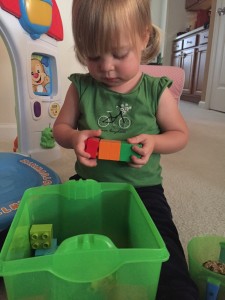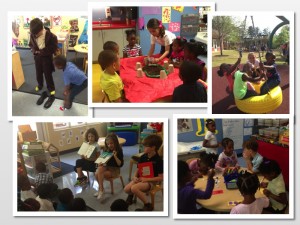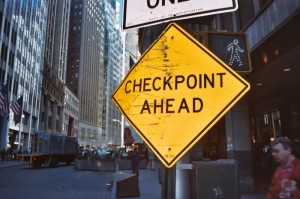All my life, failure has been a negative thing. I strive for excellence and failing was certainly not excellent in my opinion.
But in the past few months, I have been seeing more and more examples of how failure can truly make you better– and in most cases, better off than if you succeeded the first time.
As I watch my 19-month old constantly trying new things, she is not discouraged by failure.  The block tower falls over and I immediately say, “Uh ohhhh,” prepared to console my toddler after all the work she put into her creation. But she looks at me as if she wasn’t so worried about it! Then she proceeds to gather the blocks and rebuild– this time, with the bigger blocks on the bottom.
The block tower falls over and I immediately say, “Uh ohhhh,” prepared to console my toddler after all the work she put into her creation. But she looks at me as if she wasn’t so worried about it! Then she proceeds to gather the blocks and rebuild– this time, with the bigger blocks on the bottom.
She stammers over to her table with a cup of grapes and loses balance, tipping the grapes to the ground. I hold my breath, feeling sorry for my dear daughter and her favorite snack. But without a second thought, she picks up each grape, delighting in the fact that she gets to put them back in the cup one at a time. (We have a five-second rule in our house.)
This theme has translated into my work life as well. Offering challenges where children are going to fail and fail again before they might succeed (and might not!) teach students that failure might be a friend. The STEAM challenges I have led in my classroom and the activities in their iHub class, in particular, are windows into this type of learning. Students try to meet the challenge and often fail, have to pick themselves up again, and go down another path. The lessons they learn from these experiences help them with empathy– they pick up a classmate when his or her project didn’t go as planned. They also teach students that it’s okay to make mistakes. Mr. Kevin explained it well a few weeks ago saying, “You want to fail. If you fail, you know exactly where you need to focus, where you need to improve.”
New opportunities arise when something doesn’t go the way it should. Failure is our chance to try it again– not something we should fear.
Learner, Thinker, Writer: Kathy Bruyn serves the Trinity School community as a Second Grade Lead Teacher.


